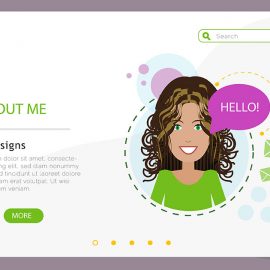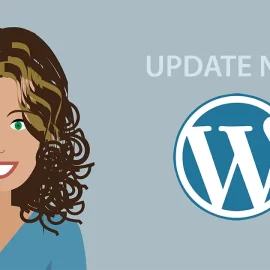
5 Great Ideas for Building a Dynamic Website
For a small business, a website is the most critical tool for branding and generating sales. It’s your welcome mat. If you’re an e-commerce business, it drives the revenue that makes your company viable. If you’re a service business, it’s the best way to demonstrate your expertise. Regardless of whether you sell goods and services, your company’s website should convey the solutions you offer, and you’ll need to drive traffic there.
Here are 5 ideas for building a dynamic website that provides your small business with a powerful marketing platform.
1. Make it memorable
Apply the same basic branding principles on your website that you apply consistently across other communication channels.
Start with a memorable domain name, ideally one that correlates with your business name. Include your logo, tagline and other brand symbols. Make your design attractive and consistent with similar schemes used in your physical locations or on your other marketing materials.
2. Make it user-friendly
The user experience is critical in dynamic websites. People move quickly on the web. Therefore, you need a website that is easy to understand and use. A simple navigation path, top navigation tabs and a breadcrumb structure are strong elements of usability.
User experience is the overall sentiment a person feels after engaging with your website. You need the following elements to provide great usability. You want to provide easy searches, personalised recommendations, a seamless buying process, accurate product descriptions, testimonials and timely responses to customer service requests.
3. Build with a content management system (CMS)
Building small-business websites with a content management system is the norm these days. Even marketing agencies build many sites on WordPress, Joomla and Drupal for clients. WordPress is the most popular CMS platform.
The benefit of using a CMS is the ease with which you can update content and integrate features. CMS offers an effective and efficient way to provide updated blog articles with static website content.
Themes are available that correlate with virtually any type of wedsite you want. You can find high-quality e-commerce sites or sleek-looking corporate layouts.
4. Go with a responsive design
More people conduct searches on mobile devices than on desktop computers. You need a website that is responsive. A responsive website is one that conforms to the user’s screen size, whether it is desktop, tablet or mobile. A responsive website is simpler to develop and maintain.
Google has even made mobile-friendliness a key factor in search results. If using WordPress, just select a template that has a responsive design.
5. Engage and retain customers
Effective marketing and SEO can help drive traffic to your website. That is just the first step. You also want to engage visitors and retain them.
Feature social media buttons prominently to acquire followers and give people the ability to share your content. Offer a prominent subscriber form or a button for your newsletter or e-mail list.
Social tools and subscriber lists are great methods to capture a visitor for ongoing communication and to retain them as long-term customers.
Conclusion
A small business website is a necessity, despite the surprising fact that about half of small businesses still don’t have one. More importantly, build one that is easy to manage, yet attractive and user-friendly for visitors. Use responsive design to appeal to a diverse audience and integrate tools that engage and retain customers.
SOURCE: Nextiva
Ready to bring your vision to life? Don’t settle for ordinary, let’s design the extraordinary together! Unleash the power of your ideas with stunning visuals. Your masterpiece is just a click away. Think we’d be a great fit? Work with me and let my expert graphic design skills transform your concepts into captivating designs. Let’s talk!



